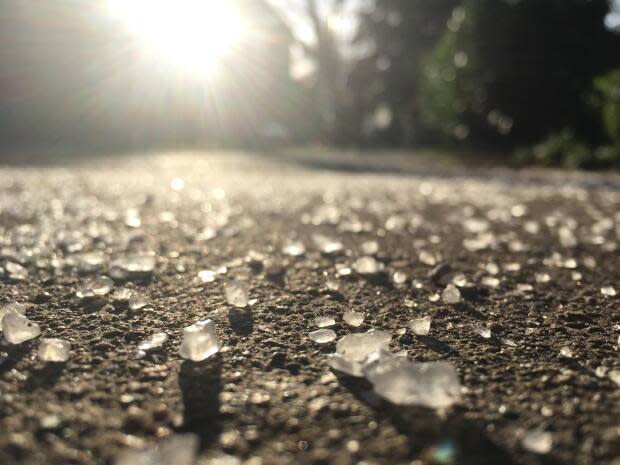Road salt levels in some local creeks toxic to aquatic life, says riverkeeper

The amount of road salt that people, businesses, and cities are using over the winter is likely too much and is definitely hurting local waterways, according to the Ottawa Riverkeeper.
The organization began monitoring how much road salt is making its way into local creeks last winter as part of its road salt monitoring pilot project.
The Canadian Council of Ministers of the Environment has established federal guidelines around the amount of chloride — which is partly what salt breaks down into when it dissolves in water — in waterbodies.
Those guidelines state that 120 milligrams per litre leads to chronic, long-term toxicity, while anything above 640 milligrams per litre is considered acutely toxic.
According to the Ottawa Riverkeeper, researchers found water samples containing chloride amounts five times the acute level.
"Last year we were seeing levels well into the thousands," said Katy Alambo, a biologist with the Ottawa River Keeper.
"We've expanded the program [this year] and we're seeing similar if not higher numbers."
Not only does chloride take a long time to break down further, it's also toxic to aquatic life such as fish, amphibians, invertebrates and insects.
"High chloride levels can cause disruptions to their reproduction cycles, their growth cycles," Alambo said.
"In cases of species like amphibians who respire through their skin, it can also pose consequences there, too, and keep them from being able to breathe properly."
You might be using too much salt
As part of a pilot project that ran between January and March 2020, volunteers monitored five creeks — Pinecrest, Graham, Green, McKay, and Moore creeks — that were close to roads, shopping plazas, residential areas and anywhere else in Ottawa and Gatineau, Que., where high amounts of road salt could be used.
They measured the water's conductivity at each of those creeks after a large snowfall, rainstorm, thaw, or any event that would lead to more water entering the creeks.
The conductivity of water rises the more dissolved ions like chloride there are. If the volunteers measured a certain level of conductivity, they then took a water sample to be analyzed.
What they found, Alambo said, suggested too much road salt was being used.

"We definitely understand that salt is important to keeping our roads safe," said Alambo. "One coffee mug full of road salt is pretty much all you need to de-ice one of your standard to two-car driveways."
Salt is also ineffective at temperatures colder than –10 C, she added.
Instead of salt, Alambo suggests using sand, gravel, or even cat litter to help provide traction.
The Ottawa Riverkeeper also plans to approach the City of Ottawa about its salt use, especially as municipal officials are in the midst of reviewing the city's winter maintenance standards.

